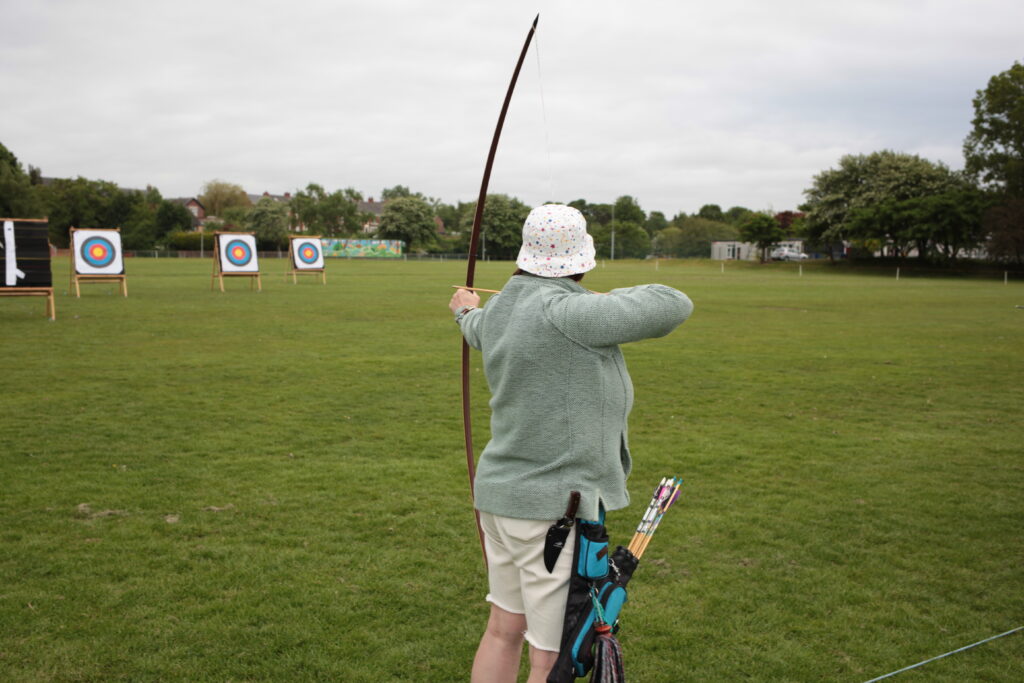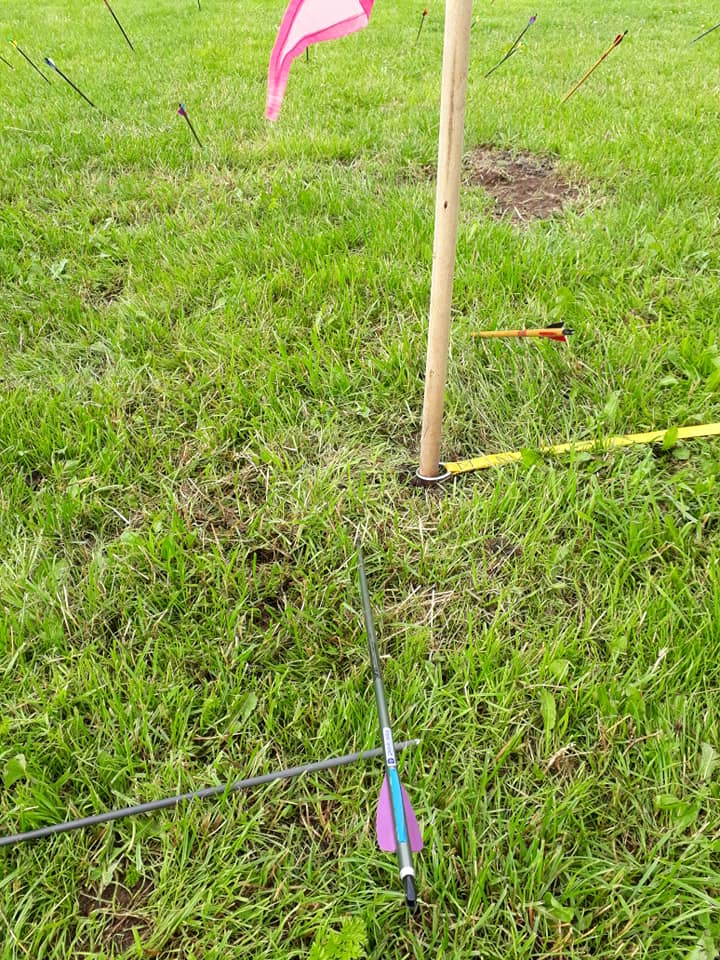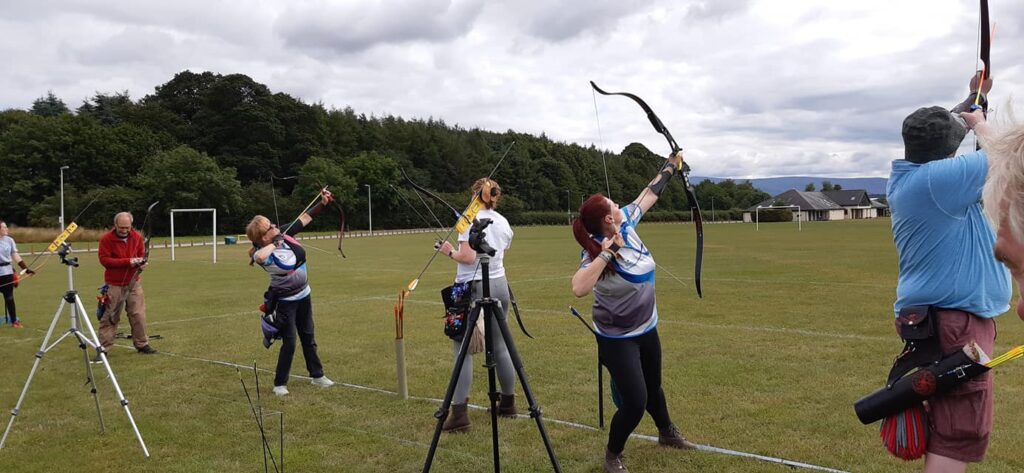There are basically four disciplines, or types of archery, in which archers can partake. They are as follows :
Target Archery
This is the main type of archery at most clubs. The archer stands at the shooting line and shoots at a target face that consists of circular scoring zones. It may take place indoors or outdoors, and the size of the target face & distance may vary.
Target Archery is the discipline you see at the Olympics.

Field Archery, including 3D Animal Rounds
It is illegal to hunt with bow and arrows in the UK, but field and 3D archery replicates the skills of bow hunting without involving any live animals. A Field course typically covers a more natural and varied terrain, often in dedicated, private woodlands. In some cases the distances are varied and unmarked so the archer must judge it carefully. They must shoot up and down slopes, between trees and undergrowth, and sometimes across streams. The target may be a variety of circular faces, printed animal pictures or 3D foam rubber animals and objects.


Clout Archery
In this form of archery the archer shoots at the clout, which is a flag set in the ground at a greater distance than target archery is shot at. There are two different sets of distances for Imperial and Metric clout. In the imperial clout the distances are 180 yds for men and 140 yds for women, and in the metric clout it is 165m for men and 125m for women. The arrows are scored by how close they are to the clout flag using a rope with sections coloured according to the scoring zones.

Flight Archery
In this form of archery the object is to shoot your arrows as far as you possibly can. There is a very different technique involved in flight shooting, whereby an angle of close to 45o will get you the best results. Arrows will go for hundreds of metres.
Riverside archers are very keen on flight but, as you can imagine, it’s not possible to shoot flight properly on the school field. What we can do to practice, is to shoot flu-flu arrows. These have fletches designed for maximum air resistance and to act as a sort of parachute, halting the flight of the arrow and bringing it to land in a much shorter distance.
